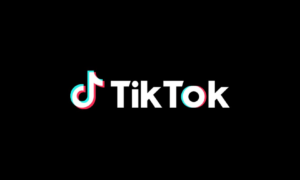Introduction
In an era dominated by digital technologies and online marketing, print advertising might seem like a relic of the past. However, the reality is that print advertising continues to hold its ground and even thrive in certain aspects. This article explores the enduring relevance of print advertising in a digital world, highlighting its unique advantages and the reasons why businesses should consider integrating it into their marketing strategies.
Print Advertising in a Digital Age
1. Tangibility and Credibility
One of the primary strengths of print advertising lies in its tangibility. Unlike digital ads that can be easily swiped away or ignored, print materials such as brochures, magazines, and newspapers physically exist in the hands of the audience. This tangibility contributes to a sense of credibility and legitimacy, as people tend to trust information they can touch and feel.
Print materials, especially when well-designed and professionally printed, convey a level of authority that digital ads may struggle to achieve. In a world inundated with online content, print advertising offers a refreshing and authentic way to engage with audiences.
2. Targeted local advertising
Print advertising provides an excellent platform for targeted local advertising, allowing businesses to connect with specific geographic communities. Local newspapers, magazines, and community newsletters enable businesses to reach a local audience effectively. This is particularly valuable for small businesses that rely on local patronage.
Localized print advertising is a powerful tool for creating a sense of community and building brand loyalty within a specific region. For example, a neighborhood restaurant can greatly greatly benefit from advertising in a local magazine, establishing a direct connection with potential customers in the immediate vicinity.
3. Enhanced Engagement and Focus
Print materials demand a different kind of attention from readers. Unlike the often-distracted scrolling behavior associated with digital content, individuals engaging with print materials tend to be more focused. When someone picks up a magazine or newspaper, they are likely to dedicate a certain amount of time to reading and absorbing the content.
This heightened engagement creates a unique opportunity for advertisers to deliver a more profound and lasting message. Print advertising allows for longer exposure times, giving businesses the chance to tell a more detailed and compelling story about their products or services.
4. Less clutter and distraction
The digital landscape is saturated with advertisements, pop-ups, and sponsored content vying for the user’s attention. This constant bombardment can lead to ad fatigue and a reduced impact on digital marketing efforts. Print advertising, on the other hand, operates in a less cluttered environment.
When consumers engage with print media, they are not simultaneously bombarded by notifications, competing ads, or other online distractions. This isolation from digital noise allows print ads to stand out and make a more significant impression on the audience.
5. Longevity and Permanence
While digital ads can disappear with a simple click or swipe, print materials have a more lasting presence. Magazines, brochures, and newspapers can remain in homes, offices, or waiting areas for an extended period. This longevity contributes to increased visibility over time, as individuals may revisit or share the printed material with others.
Print advertising, with its physical permanence, offers a lasting brand impression that digital ads often struggle to achieve in the fleeting online environment.
6. Trust and Credibility
Print advertising, especially when featured in reputable publications, can enhance a brand’s trust and credibility. Being showcased in a well-established magazine or newspaper provides a level of endorsement that is inherently trusted by readers.
In contrast, online ads, particularly on social media, are often viewed with skepticism due to the prevalence of fake news, scams, and clickbait. Print advertising, by its nature, lends itself to a more credible image, fostering trust among consumers.
7. Integration with digital marketing
The synergy between print and digital advertising is a powerful combination. Smart marketers understand that these two mediums can complement each other to create a cohesive and comprehensive marketing strategy. For instance, a print ad can direct readers to a specific landing page or encourage them to engage with the brand on social media.
By integrating print and digital marketing efforts, businesses can create a multi-channel approach that reaches audiences across various touchpoints, maximizing the impact of their campaigns.
Conclusion
Print advertising remains a relevant and effective marketing tool in the digital age. Its tangibility, credibility, targeted local approach, enhanced engagement, freedom from digital clutter, permanence, and the ability to foster trust make it a valuable component of a well-rounded marketing strategy.
While the digital landscape continues to evolve, businesses should not overlook the enduring power of print advertising. By carefully integrating print materials into their marketing mix, companies can create a more holistic and impactful brand presence that resonates with diverse audiences in the ever-changing landscape of modern marketing.



































